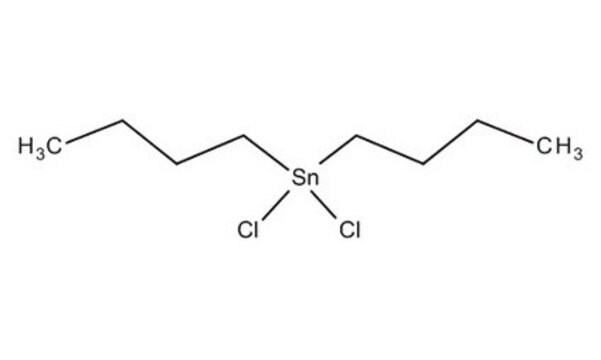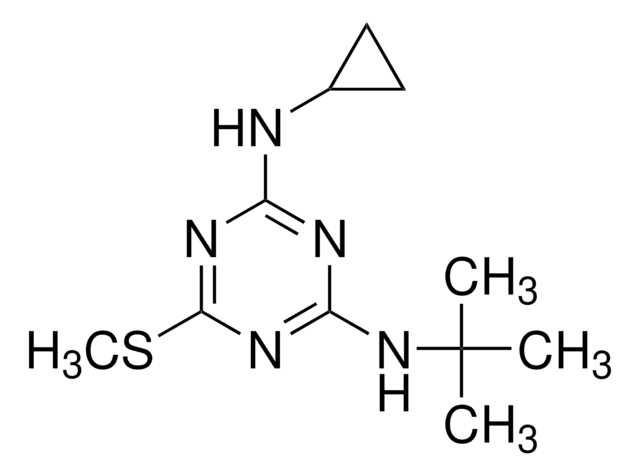205494
Dibutyltin dichloride
96%
Synonyme(s) :
Dibutyldichlorotin
About This Item
Produits recommandés
Pureté
96%
Forme
solid
Point d'ébullition
135 °C/10 mmHg (lit.)
Pf
37-40 °C (lit.)
Chaîne SMILES
CCCC[Sn](Cl)(Cl)CCCC
InChI
1S/2C4H9.2ClH.Sn/c2*1-3-4-2;;;/h2*1,3-4H2,2H3;2*1H;/q;;;;+2/p-2
Clé InChI
RJGHQTVXGKYATR-UHFFFAOYSA-L
Vous recherchez des produits similaires ? Visite Guide de comparaison des produits
Application
- Effects of dibutyltin compounds on PPARγ/RXRα activity: Studies the impact of various dibutyltin compounds, including dibutyltin dichloride, on adipogenesis and inflammation in mammalian cells, emphasizing their effects on the PPARγ/RXRα pathway (Milton et al., 2017).
Mention d'avertissement
Danger
Mentions de danger
Classification des risques
Acute Tox. 2 Inhalation - Acute Tox. 3 Oral - Acute Tox. 4 Dermal - Aquatic Acute 1 - Aquatic Chronic 1 - Eye Dam. 1 - Muta. 2 - Repr. 1B - Skin Corr. 1B - Skin Sens. 1 - STOT RE 1 Oral - STOT SE 1 Oral
Organes cibles
thymus
Code de la classe de stockage
6.1A - Combustible acute toxic Cat. 1 and 2 / very toxic hazardous materials
Classe de danger pour l'eau (WGK)
WGK 3
Point d'éclair (°F)
235.4 °F - closed cup
Point d'éclair (°C)
113 °C - closed cup
Équipement de protection individuelle
Eyeshields, Faceshields, Gloves, type P3 (EN 143) respirator cartridges
Certificats d'analyse (COA)
Recherchez un Certificats d'analyse (COA) en saisissant le numéro de lot du produit. Les numéros de lot figurent sur l'étiquette du produit après les mots "Lot" ou "Batch".
Déjà en possession de ce produit ?
Retrouvez la documentation relative aux produits que vous avez récemment achetés dans la Bibliothèque de documents.
Les clients ont également consulté
Notre équipe de scientifiques dispose d'une expérience dans tous les secteurs de la recherche, notamment en sciences de la vie, science des matériaux, synthèse chimique, chromatographie, analyse et dans de nombreux autres domaines..
Contacter notre Service technique













